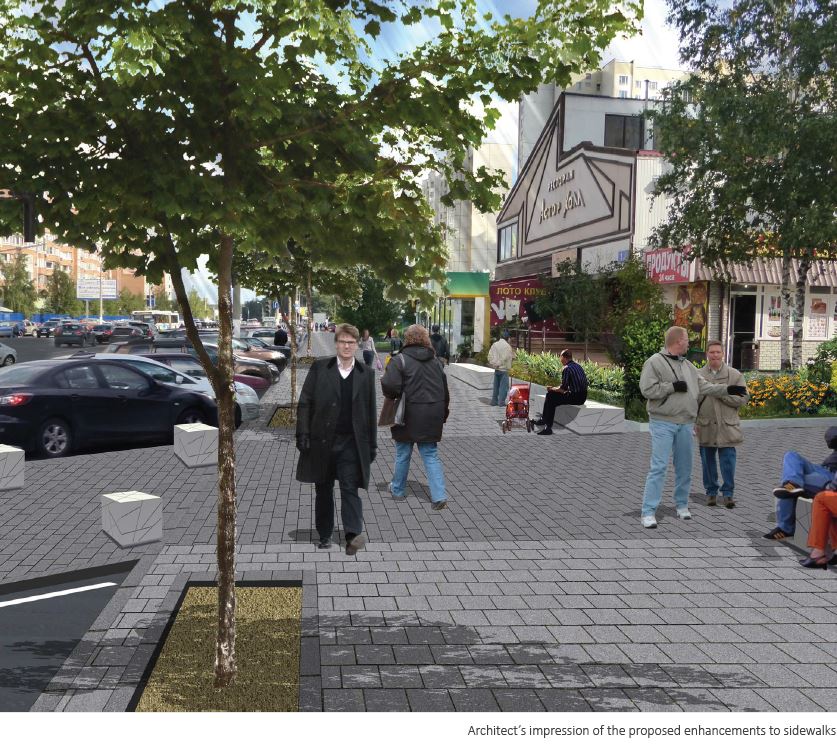In 2012 the Moscow City Government announced plans to double the size of the city territory, yet it is still prioritizing pedestrians by pursuing a major strategy to improve walkable routes throughout the city.
Moscow is a city on the brink of significant change, with over $60 billion of transport network improvements expected by 2020, including over 100 kilometers of new Metro lines. However, in keeping with its existing walking strategy, the Government has prioritized the creation of a high quality walking and cycling environment, exemplified by recent city center projects (see North American Review 11) including pedestrianizing Nikolskaya Street (designed by Steer Davies Gleave) and other nearby streets, a river cycle route and a bike rental scheme.
The Government also wants to improve walking and cycling in residential neighborhoods and districts up to 10 kilometers from the city center. To help achieve this, Steer Davies Gleave recently supported an international team, working for the Moscow City Government, responsible for integrated transport projects.
A pedestrian route improvement strategy will cover a 1.2 kilometer, or 15 minute walking time, catchment area around 35 of Moscow’s 190 metro stations. Routes will be more pleasant, safe, and comfortable, encouraging more people to walk. With improvements on this scale a number of design challenges must be addressed if pedestrians are to benefit fully. In Moscow’s case, we identified:
Cars park everywhere in Moscow. Moscow’s streets were not originally laid out for high car ownership, and so people park on roads, curbs, and sidewalks with impunity. Part of our solution was full height curbs, and strategic positioning of street furniture and trees, to define and mark pedestrian spaces. Ultimately, however, stronger enforcement is also needed.
Level changes present major barriers for all people. We found steep ramps and a lack of dropped curbs on many routes, issues which could be overcome with properly designed standard details.
Navigation within “superblocks” is difficult. We found that this is due to unclear and undifferentiated internal routes. Clear and consistent wayfinding information would aid pedestrians greatly, as would distinctive design elements, such as feature planting and special street furniture and surfacing, to strengthen the “sense of place”.
Pedestrian movement is hindered by poor sidewalks. These are often too narrow, obstructed, poorly surfaced, or simply not there. Our work identified measures to enhance the continuity and consistency of routes.
Station entrances lack visibility. Consistent and distinctive public realm improvements would not only enhance visibility but also contribute to a stronger local civic identity. To address some of these challenges, we had to create individual design solutions for each route, with accompanying design guidance for wider application.
Delivery of these improvements is set to take place during 2014, in line with the City Government’s ambitious investment program. We’re looking forward to seeing the results.
